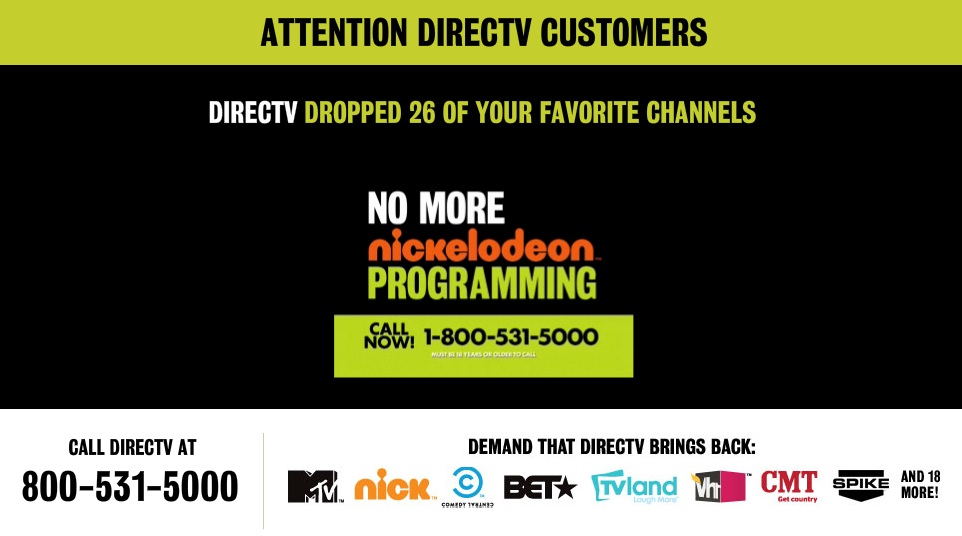On July 10th, 26 channels under the Viacom umbrella went dark on DirecTV’s satellite service. The age old business model of bundling television networks together may have run its course and this situation is creating a public relations nightmare for both organizations.
Since this dispute began several days ago, DirecTV and Viacom have both turned to social media to express their angst and to do damage control for their respective brand. DirecTV has create a website, DirecTVPromise.com, which outlines why this situation has happened, FAQs, and other ways to watch Viacom’s programming. Additionally, this site provides quotes from frustrated DirecTV customers as well as recent news articles. Lastly, DirecTV has even gone a step further by having their CEO Mike White speak directly to consumers in a YouTube video:
DIRECTV CEO Mike White Message to Customers
On the other side of this battle, Viacom has taken to it’s own company blog to dispute DirecTV’s remakes regarding contract negotiations. Additionally, Viacom has utilized their Facebook page to connect with consumers as well. Unfortunately, when analyzing each brands ability to communicate during a crisis, DirecTV wins in this arena. DirecTV followed key prinicples of crisis communication and the following are among the messages that are invariably part of any good crisis response:
- A succinct explanation of what went wrong
- An expression of concern for the impact that the situation has on customers, employees, the general public, etc.
- A sincere apology, if warranted and a sense that the company takes responsibilities for any missteps it may have made
- A commitment to identifying the underlying factors that caused this situation to happen and addressing them
- An expression of confidence that this situation does not reflect poorly on the company overall (Pisciotta, 2010).
DirecTV has worked to incorporate all of these aspects, while Viacom has only scratched the tip of the iceberg with surface-level messages and website, WhenDirectTVDrops.com, aimed solely at driving DirecTV customers to demand ‘their channels back’.
Where is Viacom’s CEO and why haven’t they worked to create messages similar to DirecTV? Additionally, why should consumers OR satellite providers like DirecTV pay more for content that is available for free (or cheap) online? These questions have not been answered by Viacom, thus most consumers are angry with Viacom and are threatening to boycott them from now on (Guzman, 2012).
Meanwhile, DirecTV is protecting its core consumer base by offering discounts and free channels. On July 13th, DirecTV announced that it would give its subscribers free access to premium Encore channels this month to show appreciation for their loyalty (Sutter, 2012). “To thank you for your patience until Viacom channels are returned, all eight Encore Channels (including Encore Family) will be made available to all customers thru July 31st,” the company wrote Wednesday on its Facebook page. “Tune to Channels 535 to 542 to start watching (Sutter, 2012).”
As the lines are drawn between programmers and distributors, one thing is clear: the price of TV is going up, but who will be left holding the bag?
References:



8 Responses to DirecTV vs. Viacom: The Crisis Communication Battle Rages On